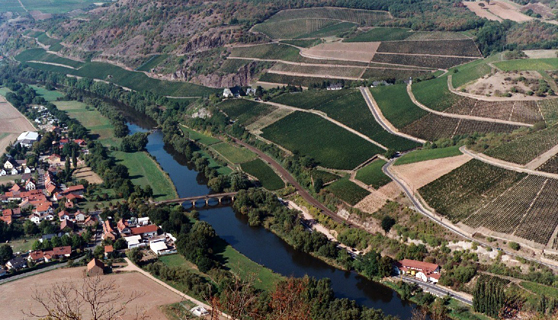by Tim York » Thu Apr 10, 2008 10:19 am
I intend to write up this event in several parts.
Part 1 (which follows) - Malbec's remarkable properties
Part 2 - Cahors history and plans for the future
Part 3 - Tasting notes
Part 4 - Conclusions
Malbec’s remarkable properties
In the Middle Ages Cahors wines were famous for their intensely deep colour (Black Wine) and their aptitude to age well without oxidising. This was very important in those days before the development of bottling under cork when most wine reached its market oxidized and/or vinegary. Cahors was much in demand both as itself for its colour, body and freshness and as a blending wine (vin médecin) to stabilise and strengthen Bordeaux wines.
We now have scientific proof that this was largely due to the properties of the Malbec grape grown in the Cahors environment. The oenologist Dr. Nicolas Vivas has carried out extensive studies into Cahors Malbec. It is particularly rich in tannins with a good ratio of tannins to anthocyanes which represents the quality of the wine’s polyphenolic skeleton. Its phenolic profile is perfectly adapted to the early stabilisation of the colouring matter. Malbec’s colouring matter is particularly strong in blue/mauve elements which bring the “black” colour and freshness to the wine. Colour and aromatics evolve together so that stability of colour goes hand in hand with stability of aromas. Quality potential of Malbec with its phenolic balance, fresh dark colour, aromas of preserved fruit and round tannins is analytically superior to that of the Bordeaux varieties and Tempranillo.
However Malbec is a more difficult and capricious variety than, say, Cabernet Sauvignon. It is more sensitive to soil and vintage conditions, requires optimal maturity, is vulnerable to humidity and demands skilful handling both in the vineyard and at the winemaking stage.
The leading French wine critic Michel Bettane and Decanter’s Antony Rose (speaking in creditable French) took up this theme. On the best terroirs, Malbec in Cahors is capable of producing wines with remarkable tactile qualities, velvety tannins and aromas of violet. However this potential is all too often compromised by the human factor, in particular by the allowing of the berries to grow too big; small berries are essential for quality. Mendoza is favoured in this respect; exceptionally clear skies, bright sunlight and cold nights, particularly above 1000 metres, have allowed the development of excellent small berried clones which some Cahors producers now wish to reintroduce. The finest Mendoza Malbecs are produced at altitude where excellent balance is achieved; industrial production at lower altitudes is far less interesting.
Malbec also has good capacity to marry with wood.
From a commercial point of view Mendoza has the advantage of being able to produce decent quality at higher yields (80hl/ha v. 50hl/ha) and at lower cost than Cahors due to its more predictable climate and lower labour costs.
This indicates that Cahors should not try to compete in the lowest price bands but should aim to draw from their Malbec a quality which competes at higher price levels.
Tim York


